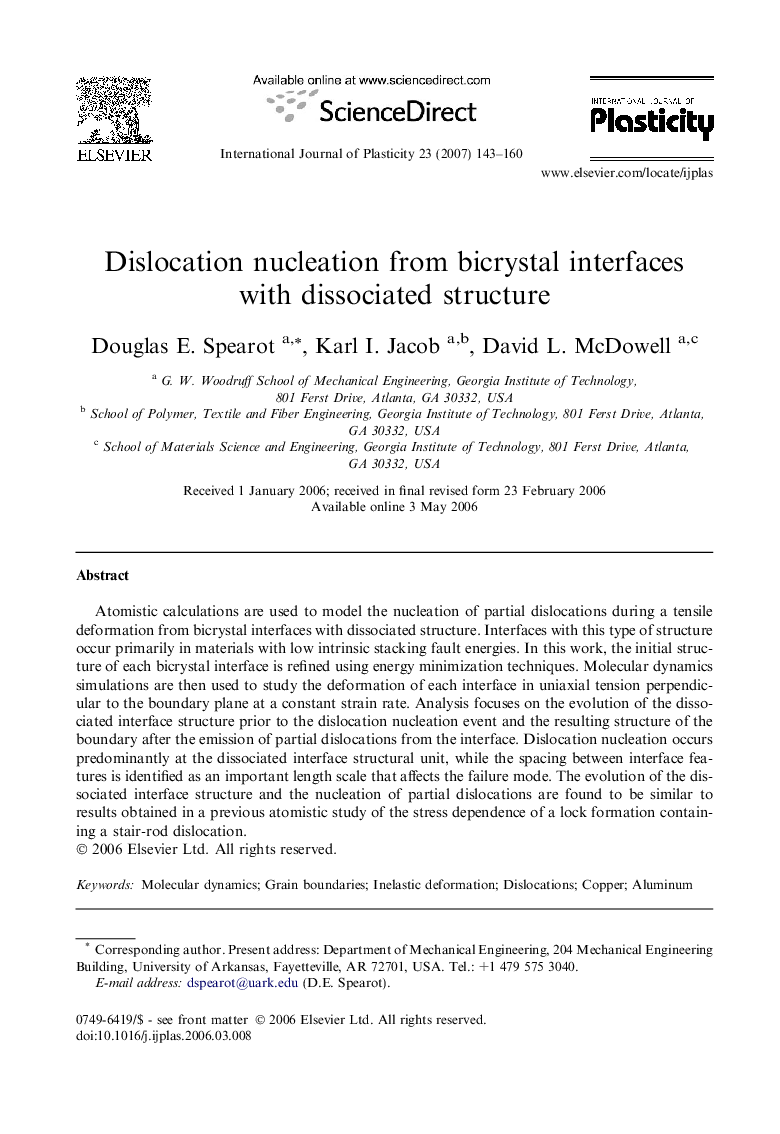| Article ID | Journal | Published Year | Pages | File Type |
|---|---|---|---|---|
| 787765 | International Journal of Plasticity | 2007 | 18 Pages |
Atomistic calculations are used to model the nucleation of partial dislocations during a tensile deformation from bicrystal interfaces with dissociated structure. Interfaces with this type of structure occur primarily in materials with low intrinsic stacking fault energies. In this work, the initial structure of each bicrystal interface is refined using energy minimization techniques. Molecular dynamics simulations are then used to study the deformation of each interface in uniaxial tension perpendicular to the boundary plane at a constant strain rate. Analysis focuses on the evolution of the dissociated interface structure prior to the dislocation nucleation event and the resulting structure of the boundary after the emission of partial dislocations from the interface. Dislocation nucleation occurs predominantly at the dissociated interface structural unit, while the spacing between interface features is identified as an important length scale that affects the failure mode. The evolution of the dissociated interface structure and the nucleation of partial dislocations are found to be similar to results obtained in a previous atomistic study of the stress dependence of a lock formation containing a stair-rod dislocation.
